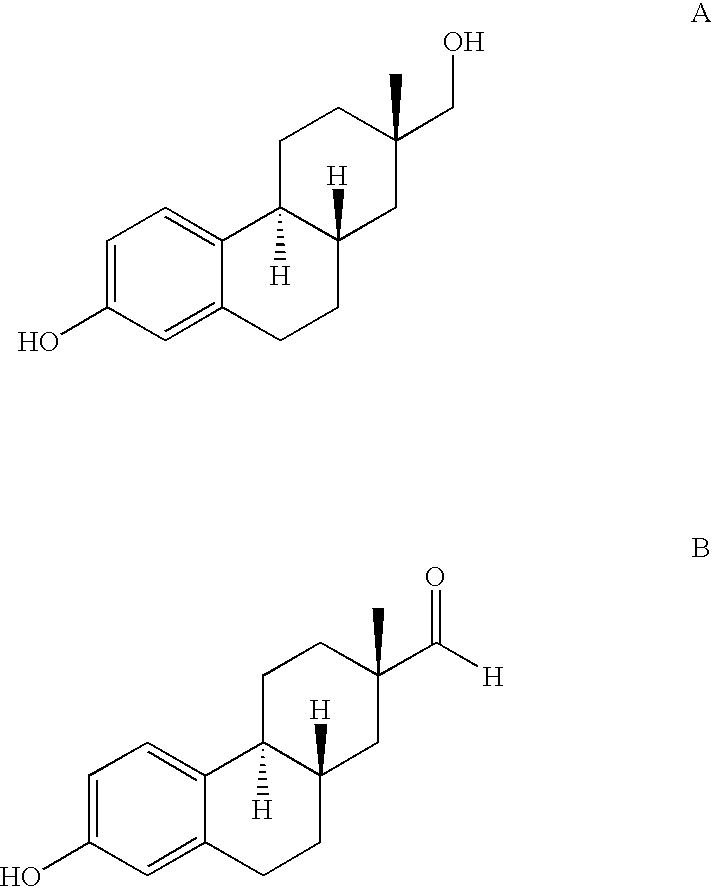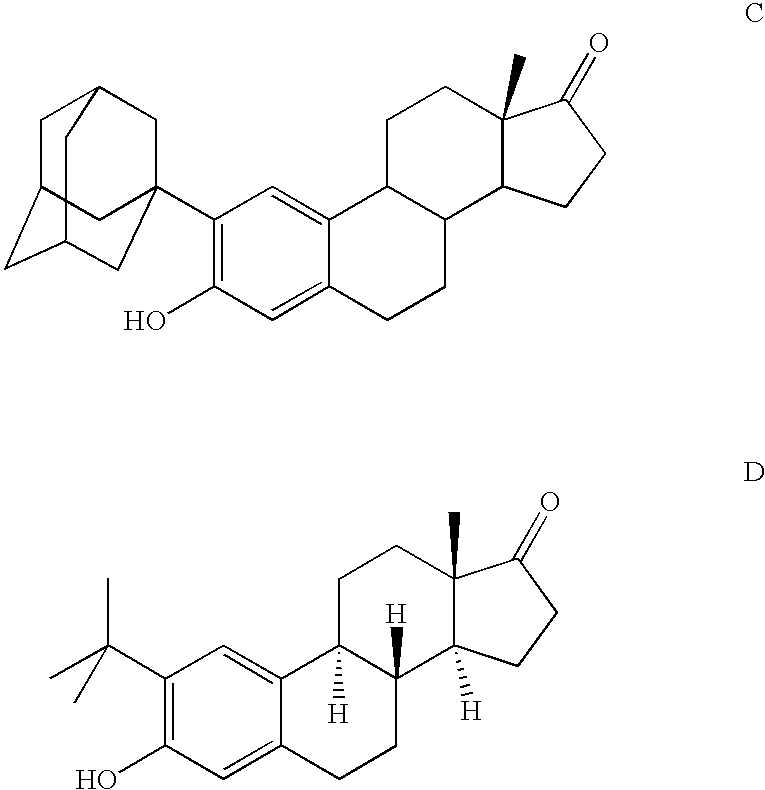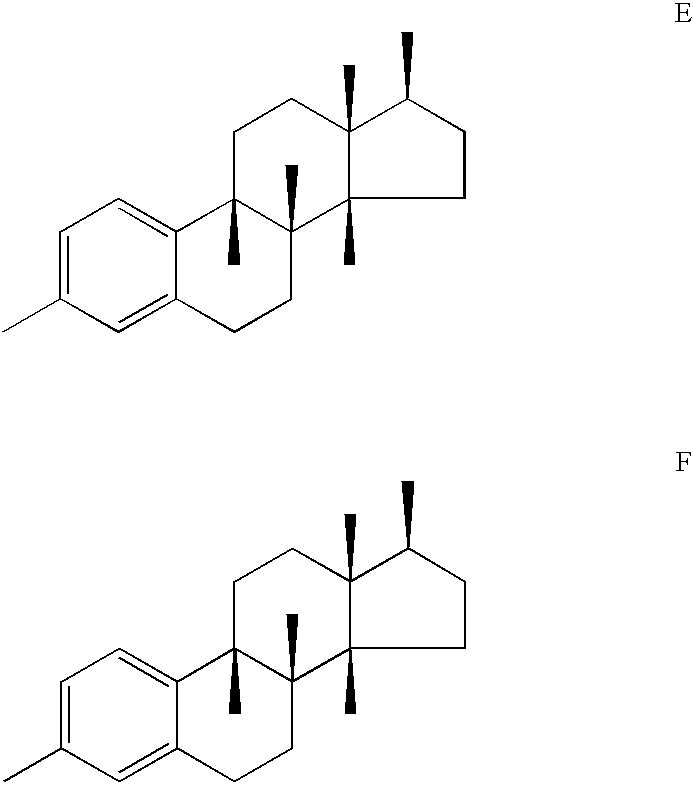Treatment of opthalmic diseases
- Summary
- Abstract
- Description
- Claims
- Application Information
AI Technical Summary
Benefits of technology
Problems solved by technology
Method used
Image
Examples
examples
[0056] 1. Administration of PAM and PACA leads to survival of retinal pigment epithelial cells subjected to conditions of hyperoxia in vitro.
[0057] The compounds used in this study, [2S-(2a, 4a.alpha., 10a.beta.)]-1,2,3,4,4a,9,10,10a-octahydro-7-hydroxy-2-methyl-2-phenanthrenemethanol (A, below) and [2S-(2a, 4a.alpha., 10a.beta.)]- 1, 2, 3, 4, 4a, 9, 10, 10a-octahydro-7-hydroxy-2-methyl-2-phenanthrenecarboxaldehyde (B, below), were synthesized according to the procedures described in U.S. Pat. No. 4,874,891. 1
[0058] Human retinal pigment epithelial cells (RPE340 cells) were grown and subjected to conditions of hyperoxia according to Honda et al., (2001) Invest Ophthalmol Vis. Sci., Vol. 42, pp. 2139-44. The cells were subjected to either 40% O.sub.2 or 20% O.sub.2 (control) for the duration of the experiment. These conditions are known to induce apoptotic cell death.
[0059] Compounds A and B, above, were initially dissolved at 1 mg / ml in absolute ethanol and diluted in culture medium...
PUM
| Property | Measurement | Unit |
|---|---|---|
| Pressure | aaaaa | aaaaa |
| Cell death | aaaaa | aaaaa |
| Frequency | aaaaa | aaaaa |
Abstract
Description
Claims
Application Information
 Login to View More
Login to View More - R&D
- Intellectual Property
- Life Sciences
- Materials
- Tech Scout
- Unparalleled Data Quality
- Higher Quality Content
- 60% Fewer Hallucinations
Browse by: Latest US Patents, China's latest patents, Technical Efficacy Thesaurus, Application Domain, Technology Topic, Popular Technical Reports.
© 2025 PatSnap. All rights reserved.Legal|Privacy policy|Modern Slavery Act Transparency Statement|Sitemap|About US| Contact US: help@patsnap.com



